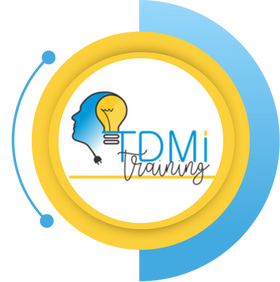Solar-Powered Electric Fences: A Natural Fit for Electrically Qualified Installers
Introduction
The renewable energy sector is experiencing unprecedented growth, reshaping industries from residential solar power to commercial energy storage. One niche that is emerging as particularly promising is the use of solar-powered electric fences. With security a top concern for farms, estates, and businesses, the ability to power fences independently of the grid offers resilience, sustainability, and reliability.
Yet installing these systems is not a DIY job. It requires a blend of photovoltaic (PV) system knowledge, battery storage expertise, and strict compliance with SANS 10222-3, the South African standard that governs electric fencing and aligns with Unit Standards Fencing requirements. This is where electrically qualified installers—already experienced with PV arrays, DC wiring, and compliance testing—are perfectly positioned.
This blog explores why solar-powered electric fences are a natural extension for electricians, covering technical anatomy, sizing rules, regulatory requirements, and the business opportunities awaiting qualified professionals.
Why Solar-Powered Fence Energizers Are Rising Now
Several converging factors explain why solar-powered energizers are in high demand today. Rising electricity costs, more frequent load-shedding, and growing security needs are pushing property owners to seek solutions that are both independent of the grid and cost-efficient.
Market Drivers
-
Rising grid costs: Electricity tariffs continue to climb, making continuous grid-powered energizers expensive.
-
Remote locations: Farms, game reserves, and construction sites often lack reliable power supply.
-
Resilience: With solar power, electric fences remain operational during outages.
-
Sustainability: Growing preference for green solutions aligns with off-grid solar energizers.
Use Cases
Consider a farm situated 20 kilometers from the nearest transformer. Running a cable for a fence energizer could cost thousands in infrastructure. A solar-powered energizer, however, only requires a panel, battery, and energizer—delivering reliable protection without long cable runs.
Similarly, game reserves often cover hundreds of hectares where grid power cannot be economically distributed. Solar energizers, combined with proper earthing and battery autonomy, keep fences live to contain wildlife and deter poaching.
These practical needs, combined with the affordability of solar components, explain why the market for solar electric fences is growing rapidly.
The Regulatory Landscape Electricians Must Know: SANS 10222-3 & CoC Requirements
Every solar-powered electric fence installation must comply with SANS 10222-3, the South African standard governing electric fencing. This document covers all aspects of installation, from signage to earthing, ensuring safety for humans, animals, and property.
What SANS 10222-3 Covers
The standard details:
-
Energizer approval requirements (must conform to IEC 60335-2-76).
-
Signage placement (warning signs every 10 meters and at entry points).
-
Earthing and lightning protection requirements.
-
Safe distances from buildings, roads, and public areas.
The 2023 update to the standard (Edition 5.1) introduced clearer rules on energizer placement, surge protection, and minimum specifications for CoC issuance.
Certificate of Compliance (CoC)
A Certificate of Compliance is not optional. Without one, insurance claims may be rejected, and property owners could face legal issues. Only certified professionals—registered Electric Fence System Installers (EFSIs)—can issue fence-related CoCs. However, electricians can:
-
Partner with EFSIs for compliance sign-off.
-
Pursue certification to expand their scope.
The practical takeaway is clear: electricians must understand both the technical requirements and the legal framework to deliver safe, insurable installations.
Technical Anatomy of a Solar-Powered Energizer System
A solar-powered electric fence is more than just a solar panel and energizer. It is an integrated system requiring careful design.
Core Components
-
Energizer: Converts stored DC power into high-voltage pulses (usually 2,000–9,000 V). Must be SABS-approved.
-
Solar Panel: Captures sunlight and charges the battery. Size varies with energizer demand.
-
Charge Controller: Regulates current between panel and battery to prevent overcharging or deep discharge.
-
Battery: Stores power, usually deep-cycle AGM, GEL, or LiFePO₄.
-
Earthing System: Copper or galvanized rods ensure fence effectiveness.
-
Protective Devices: DC isolators, fuses, surge protection, and lightning arrestors.
-
Signage & Hardware: Warning signs and insulators for safety and compliance.
Example Systems
-
Residential: A 3 J energizer, 40 W panel, and 12 V 100 Ah battery.
-
Farm: A 15 J energizer, 200 W panel, and 12 V 250 Ah battery.
These setups show how component selection scales with application.
Sizing the PV Array and Battery for Reliable Fence Performance
Correct sizing is crucial for fence uptime. Undersized systems fail during cloudy days, while oversizing raises unnecessary costs.
Step 1: Estimate Energizer Consumption
Suppose an energizer consumes 15 W continuously. Over 24 hours:
15 W × 24 h = 360 Wh/day
Step 2: Battery Sizing
Convert watt-hours to amp-hours (at 12 V):
360 Wh ÷ 12 V = 30 Ah/day
For 3 days of autonomy at 50% DoD:
30 Ah × 3 ÷ 0.5 = 180 Ah battery required
Step 3: Solar Panel Sizing
Daily load is 360 Wh. Assume 5 sun-hours/day.
360 Wh ÷ 5 h = 72 W
Accounting for 30% losses:
72 W ÷ 0.7 ≈ 103 W
So a 120 W panel is suitable.
This worked example illustrates how electricians can calculate system requirements using local solar insolation data and safety margins.
Earthing, Safety and Grounding Best Practices
Earthing is often the weak link in electric fence performance. Without proper grounding, voltage drops, animals escape, and false alarms occur.
Design Guidelines
-
Rule of thumb: 1 meter of ground rod per joule of energizer output. A 5 J energizer requires at least 5 meters of rod length.
-
Space rods 3 meters apart and connect them with corrosion-resistant clamps.
-
In dry soil, increase rod length or install multiple parallel rods.
Safety Compliance
SANS 10222-3 requires earthing continuity checks and lightning protection. Annex H details lightning arrestor specifications. Electricians should always include a soil moisture test during installation to verify ground effectiveness.
The best practice is simple: never cut corners on earthing—it determines whether the system delivers safe, effective shocks
.Integrating PV, Battery and Fence Electrics into One Compliant Installation
Integration requires not only technical precision but also compliance with safety rules.
Wiring Best Practices
-
Use appropriately sized DC cabling to minimize voltage drop.
-
Install fuses close to the battery to prevent short-circuit risks.
-
Secure PV modules on theft-resistant mounts.
Protective Devices
-
Surge protection devices (SPDs) on both PV and energizer inputs.
-
Battery isolator switches for safe servicing.
-
DC-rated breakers for overload protection.
Compliance Features
-
Warning signs every 10 meters.
-
Lockable energizer enclosures.
-
Isolation switches clearly labeled.
When integrated correctly, the PV system and fence electrics work seamlessly, ensuring safety, efficiency, and compliance.
Troubleshooting & Maintenance: What Electricians Need to Know
Even the best-designed system requires regular care.
Common Issues
-
Vegetation touching wires, causing shorts.
-
Dirty or shaded panels reducing solar yield.
-
Battery degradation leading to weak shocks.
-
Loose connections increasing resistance.
Preventive Maintenance
-
Clean panels quarterly.
-
Test fence voltage with a digital tester monthly.
-
Measure earth resistance annually (or after lightning).
-
Replace batteries every 3–5 years depending on chemistry.
Offering clients a maintenance contract is a win-win: they get reliable protection, and electricians build recurring revenue streams.
Business & Commercial Opportunities for Electricians
Solar-powered electric fences represent a significant business expansion opportunity.
Service Offerings
-
Turnkey installations (design, supply, install).
-
Solar retrofits of existing grid-powered fences.
-
Preventive maintenance packages.
-
Compliance audits and CoC coordination.
Revenue Models
Electricians can offer tiered packages, from small residential systems to large farm solutions, with optional extras like battery warranties. Adding IoT fence monitoring tools allows for subscription-based revenue.
Training, Certification and Partnering Pathways
Becoming a recognized expert requires investment in skills and compliance.
Skills to Upskill
-
Advanced PV design and installation.
-
Battery safety and management (LiFePO₄ handling).
-
SANS 10222-3 compliance training.
Certification Options
Electricians can pursue:
-
PV installer accreditation.
-
Electric Fence System Installer (EFSI) certification for CoC issuance.
-
Battery safety courses.
Where certification isn’t yet achieved, partnering with an EFSI provides a legal route for CoC compliance while still allowing electricians to manage the technical integration.
Case Study & Step-by-Step Installation Checklist for Electricians
Case Study
A 50-hectare cattle farm relied on a grid-powered 10 J energizer. Frequent power cuts left fences dead, leading to livestock escapes. The farm switched to a solar system with a 200 W panel and 200 Ah AGM battery. With improved earthing and a lightning arrestor, uptime reached 99% even during winter.
12-Step Installation Checklist
-
Conduct a site survey.
-
Select energizer based on fence length.
-
Calculate PV and battery size.
-
Plan earthing layout.
-
Choose wire size and conduit routes.
-
Install solar panel securely.
-
Mount energizer in a weatherproof enclosure.
-
Wire through charge controller to battery.
-
Add fuses, isolators, and SPDs.
-
Place warning signs.
-
Test system (voltage, earthing, battery health).
-
Issue CoC (directly or with partner) and hand over maintenance plan.
Conclusion
The renewable energy transition is creating new opportunities for electricians beyond rooftop PV and battery installations. Solar-powered electric fences combine the need for security with the benefits of sustainable power—making them a natural fit for electrically qualified professionals.
By mastering SANS 10222-3 compliance, learning PV and battery sizing techniques, and offering ongoing maintenance services, electricians can deliver reliable, insurable, and profitable fence solutions.
The message is clear: electricians are not just capable of installing solar fences—they are the best positioned to do so. With the right training and compliance partnerships, this niche can become a valuable revenue stream and a way to contribute to both security and sustainability.


Leave a comment